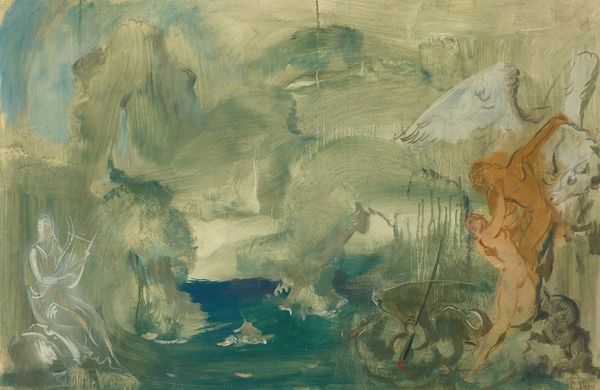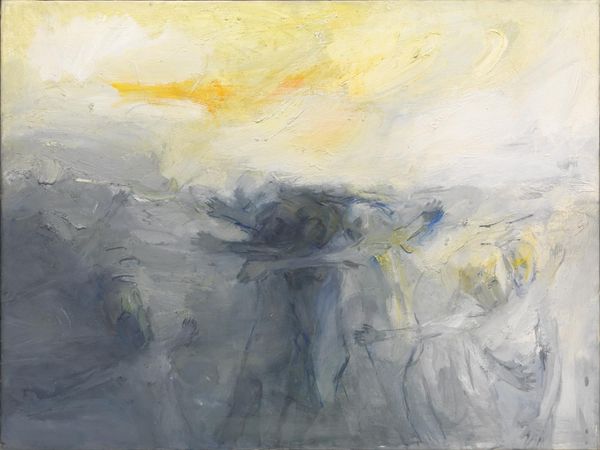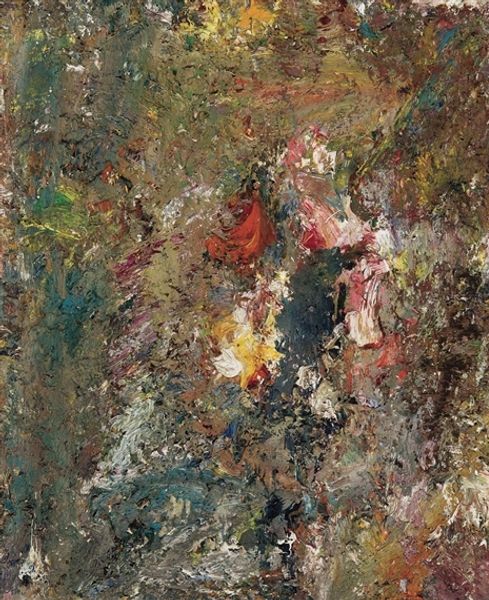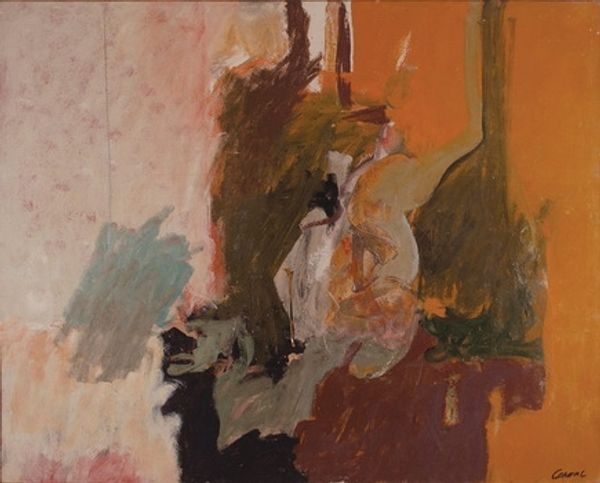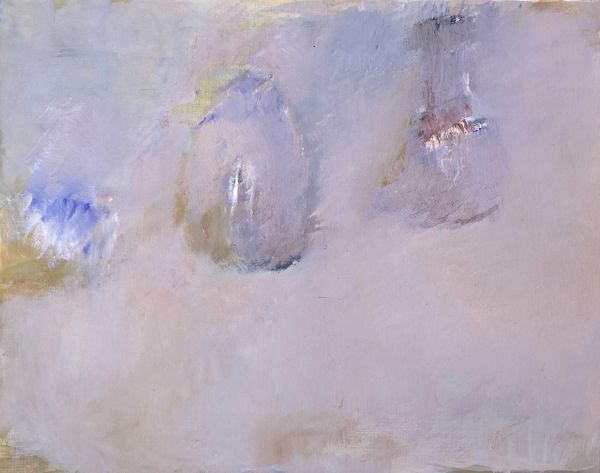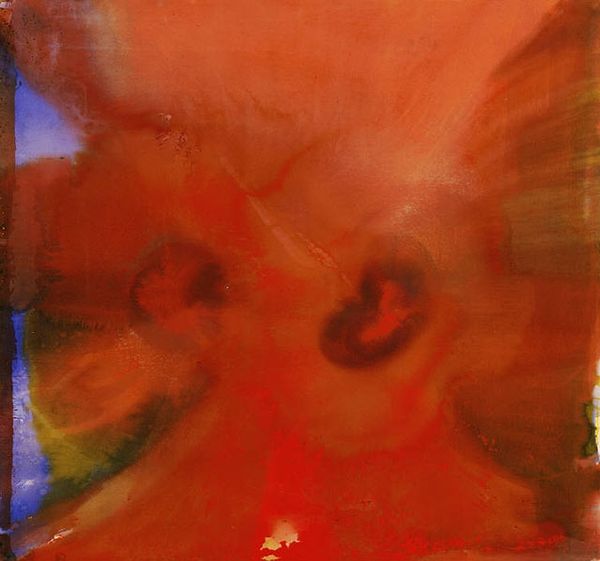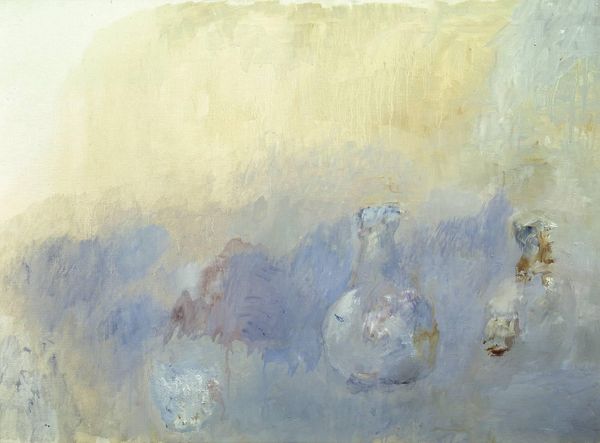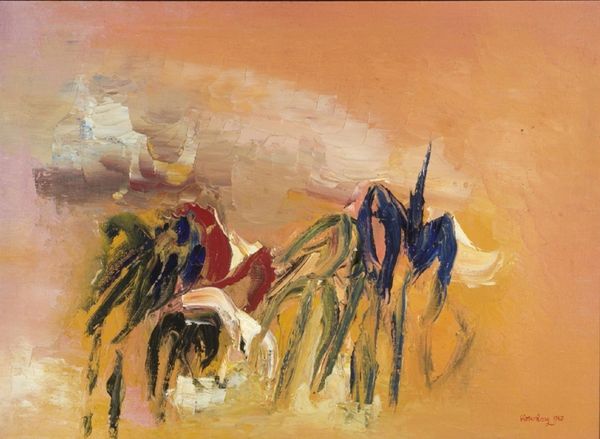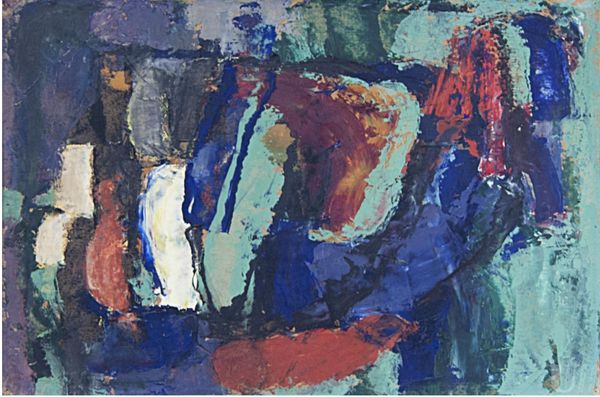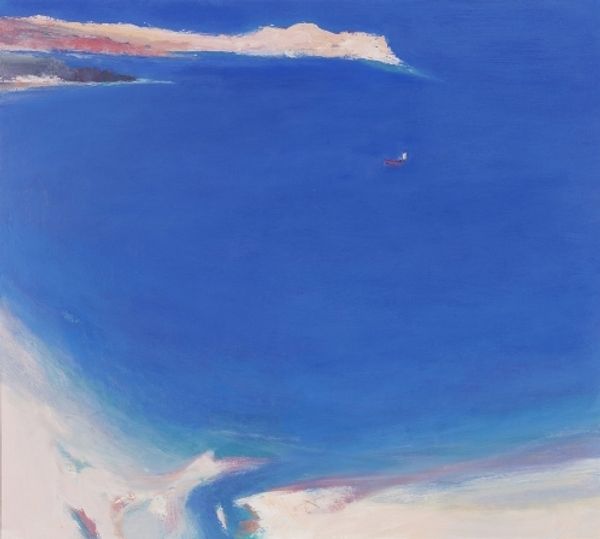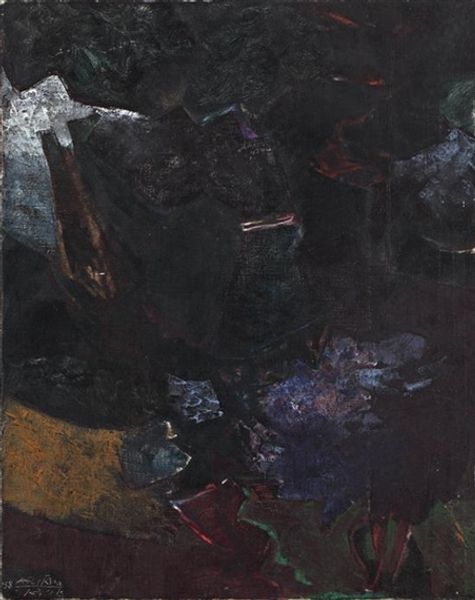
Copyright: Public Domain: Artvee
Curator: Oh, this makes my heart ache in a lovely way. It's "Ophelia with a Blue Wimple in the Water," painted by Odilon Redon sometime between 1900 and 1905. Editor: It’s ethereally morbid, isn't it? That ghostly figure emerging from what could be water or perhaps something more akin to primordial soup. A very romanticized depiction of female suffering. Curator: Precisely! Redon had such a knack for capturing inner turmoil through these hazy, dreamlike landscapes. Look at the colors—that muted palette, punctuated by jolts of intense blue and smoldering reds, creates this tension between the tangible and the utterly spectral. I find myself drawn to the ambiguity of it all. Is she drowning, dreaming, or undergoing some kind of bizarre floral transformation? Editor: That ambiguity, that refusal to let Ophelia truly escape her circumstances, speaks to the constrained role afforded to women in the social imagination of that time. She's beauty, madness, and victimhood all rolled into one tragic archetype. I wonder if the floral transformation suggests, perhaps ironically, the only accepted form of transcendence for a woman back then—a beautiful, silent object of nature. Curator: That’s a piercing insight. It’s like Redon’s deliberately making us complicit in our gaze. The soft brushstrokes and the dreamy atmosphere initially lull you in, but then the subject matter, her watery demise, gives you pause. Editor: Absolutely. And let's not forget that wimple, framing her face in such a specific way. Religious connotations can’t be avoided; think of saintly veils alongside the suppression of women's identities. It amplifies the feeling that she is somehow trapped within systems, whether literal or metaphorical. The blue, although gorgeous, also evokes feelings of coldness and desolation. Curator: So true. And that interplay between the real and the surreal— Redon does this thing, almost flirting with complete abstraction, but never quite relinquishing the figurative elements. Editor: It highlights the psychological impact of these imposed roles. The fantasy veils the reality of social and political constraints, a reflection that resonates deeply even now. I feel this work compels us to unpack the fantasies of Romanticism and the dark truths they often obscure. Curator: Absolutely. It seems she haunts us with those implications still. Well, that's given me much to ponder! Thank you. Editor: Likewise! It’s always good to be haunted, artistically speaking, of course.
Comments
No comments
Be the first to comment and join the conversation on the ultimate creative platform.
